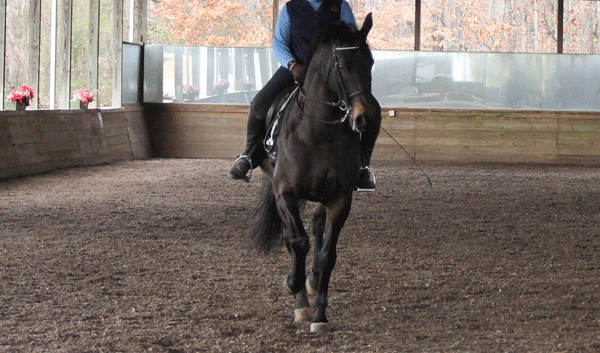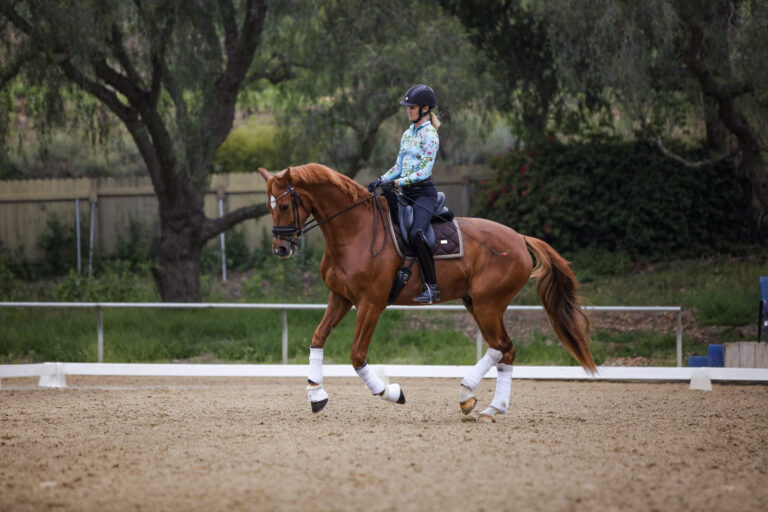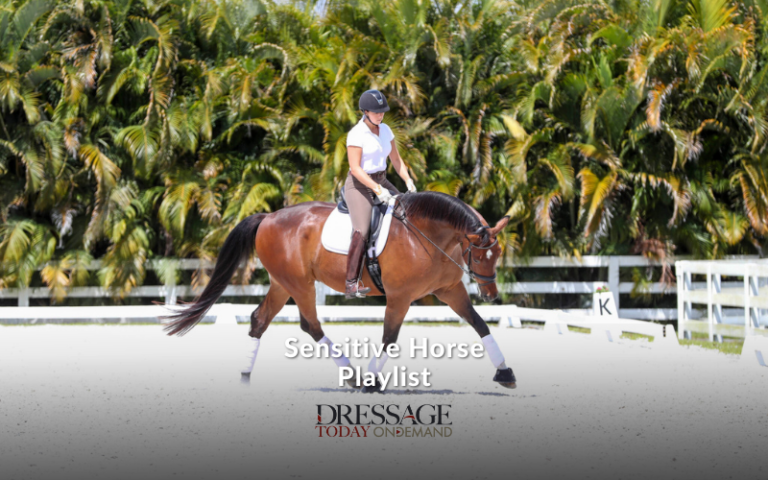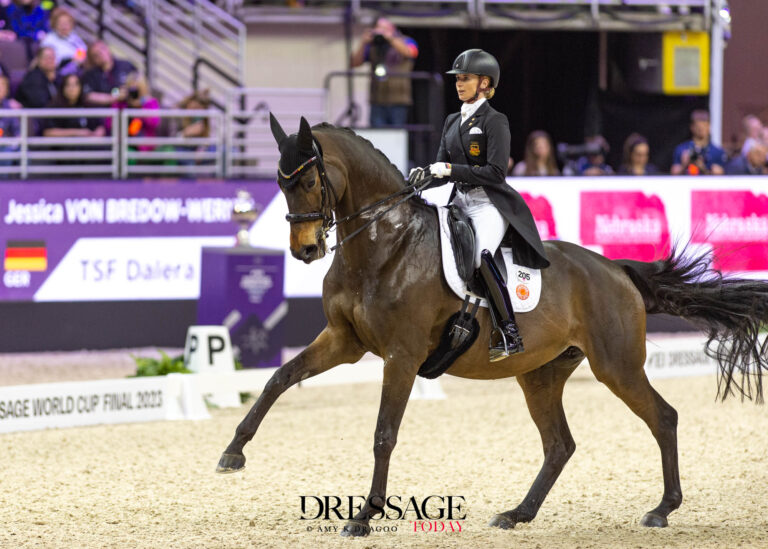It’s time to do a half pass. Do you know where your bum is?

It’s true that the biggest issue at Third Level is to establish flying changes. But I often see riders also struggling with the half pass there, and often that problem persists longer, well into Fourth Level and FEI even when the changes have been conquered.
As a judge, one comment I often make is “Rider leaning away from direction of flow.” That’s what the rider is doing in the picture above, but what I usually see is much worse. The rider is aiding so much with her outside leg that she breaks over the outside hip. This not only causes her seat to slip to the other side of the saddle and disrupts the horse’s balance but it also pulls her legs off the horse’s sides and her knees to clamp.
I see this happening just as much with riders in lessons and the warm-up ring. I think because their head is still in the middle of the horse that riders then don’t realize their bum is in a different county. An instructor standing in the middle of the ring won’t see the position problem the way she might if she was along the rail.
Occasionally the opposite happens, where the motion sideways causes the rider to break over the inside hip, but the effect is the same: the rider’s weight slips away from the direction of flow. Thus, for example, she’s sitting too much to the right when the horse is going to the left. The horse will then also start to lean to the right rather than staying upright, lose the bend to the left and find it difficult to step to the side.
How do you fix this? Well, first you have to realize that it’s a problem, and the obvious answer is that everyone you know has a cell phone and can do a quick video. Once you see that your position is the source of your frustration you can begin to fix it.
Before you start the half pass, move both bums toward the direction of flow, even if it seems like an over-correction. Then lift the torso and let the hips swing through so there’s no contortion. Another idea that might help is to try turning your back toward the direction of flow. I know that sounds counter-intuitive, and you really won’t turn it that much, but the effect is to sit up straighter through the waist area.
Interestingly, this problem doesn’t seem to happen so much with a travers along the long side, even though a half pass is essentially a travers on the diagonal. So, think of it that way. Concentrate more about the position of the hindquarters relative to the line of travel than actually asking the horse to go sideways – this could help the rider to avoid using too much outside leg and thus twisting the hips.











